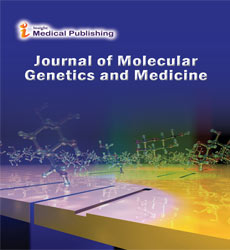Isolation, identification and antifungal susceptibility patterns of dermatophytes isolated from clinically suspected cases of Tinea infections in Kozhinjampara, Palakkad District.
Fayiza Fathima
Lecturer Cadiz Institute of Paramedical Science, India
Received: July 10, 2022; Accepted: July 14, 2022; Published: July 18, 2022
Abstract
Onychomycosis is a fungal infection of the fingernails or toenails caused by dermatophytes, nondermatophytes, moulds, and yeasts that may involve any component of the nail unit, including the matrix, bed or plate. Two species of dermatophytes, Trichophyton rubrum and Trichophyton interdigitale, are the cause of most onychomycosis. Dermatophyte onychomycosis is also called tinea unguium. Onychomycosis can cause pain, discomfort, and occupational limitations, as well as reducing quality of life. The present study aimed at isolation, identification, detection of in-vitro susceptibility pattern of various dermatophytes isolates, from clinically suspected cases of onychomycosis to the most commonly used antifungal agents(Terbinafine, ketoconazole, itraconazole, ketoconazole and fluconazole) and some chemicals(Dettol, mouthwash, potassium permanganate, acetic acid, iodine) using the ABDD susceptibility method and study of expression of multi-drug resistant gene of dermatophytes in response to antifungal agents (Terbinafine). About 10 clinical samples were collected from patients suspected of having onychomycosis from which 14 dermatophytes isolates were obtained. It was microscopically examined using LPCB wetmount. Morphological studies were carried out by culturing on SDA. Biochemical reactions also were performed. PCR was done to amplify the chitin synthase 1 and internal transcribed spacer 2 genes from DNA samples extracted from the fungal isolates and confirmed the presence of dermatophytes. Antifungal susceptibility pattern of the dermatophytes isolates were carried out by ABDD method. Some of the isolates were susceptible while some were resistant. The expression pattern of mdr2 gene in response to the most commonly used antifungal agent (Terbinafine) was analyzed using RT-PCR method. Total RNA was isolated from the fungal samples which were exposed to Terbinafine as well as control and cDNA was prepared. The cDNA was used as the template for the PCR amplification of the 83 bp mdr2 gene. Expression pattern study revealed that the mdr2 gene is upregulated in all fungal samples when treated with antifungal agent. Once the infection has started, it is really difficult to treat and get rid of the condition without the help of oral antifungal agents along with some topical treatments. Many fungal isolates obtained in the current study showed resistance towards high amounts of antifungal agents. Frequent and prolonged use of antifungal agents without expert opinion may lead to the development of multidrug resistance in Trichophyton which may leave the condition untreatable. Proper study of the antifungal sensitivity pattern and finding out the correct doasage is necessary for the management of the condition.
Open Access Journals
- Aquaculture & Veterinary Science
- Chemistry & Chemical Sciences
- Clinical Sciences
- Engineering
- General Science
- Genetics & Molecular Biology
- Health Care & Nursing
- Immunology & Microbiology
- Materials Science
- Mathematics & Physics
- Medical Sciences
- Neurology & Psychiatry
- Oncology & Cancer Science
- Pharmaceutical Sciences
